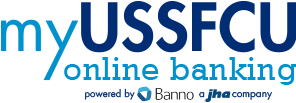Prepaids Vs. Closing Costs: What's the Difference?
Published: May 30, 2025

Buying a home comes with many moving parts—and even more unfamiliar terms. One of the most confusing? The difference between “closing costs” and “prepaids.” While both are paid at settlement, they serve different purposes and are handled differently. Understanding where your money is going can help you plan better and feel more confident on closing day.
What Are Prepaids?
Prepaid costs are upfront payments a homebuyer makes to cover future homeownership expenses before they’re actually due. These commonly include things like homeowners insurance, mortgage interest, and property taxes.
Although these costs are paid at closing, they’re not the same as closing costs. Instead of going directly to a service provider, prepaid funds are placed in an escrow account by your lender and paid out when needed.
Here’s a breakdown of common prepaids:
-
Mortgage Interest: If you close on a day other than the first of the month, your lender collects interest from the closing date through month’s end. This interest is held in escrow and applied to your first mortgage payment.
Tip: Closing near the end of the month can reduce the number of days you prepay, lowering your upfront cost. -
Homeowners Insurance: Most lenders require 6–12 months of insurance premiums to be paid upfront. These payments are collected at closing and distributed monthly by your lender.
-
Prepaid Property Taxes: Lenders often require 2–6 months of estimated property taxes in advance, depending on your local tax due dates and your closing date.
-
Initial Escrow Deposit: To create a cushion in your escrow account, your lender may require additional months of insurance and taxes beyond the prepaid amounts listed above. This reserve helps ensure there’s enough to cover payments as they come due.
Once your monthly mortgage payments begin, they will include your ongoing home insurance and property tax contributions, which continue to be held in escrow by your lender.
How Are Prepaids Calculated?
Prepaids are listed in Section F on Page 2 of your Closing Disclosure. Here’s what to look for:
-
Homeowner’s Insurance: Usually 6–12 months of premiums
-
Property Taxes: Typically 2 months’ worth (sometimes more)
-
Mortgage Interest: Based on your daily interest cost times the number of days between your closing date and the end of the month
Your Initial Escrow Payment at Closing (Section G) may also include:
- An additional 2 months of property taxes
- 2 extra months of homeowners insurance
These serve as a reserve to help cover any future increases or payment due dates.
What Are Closing Costs?
Closing costs are one-time fees paid to your lender or third parties for processing and finalizing your home loan. These may include:
-
Loan origination or application fees
-
Credit report fees
-
Appraisal and inspection fees
-
Title search and title insurance
-
Attorney or settlement fees
-
Recording fees to register your home with the county
You’ll find all these fees itemized in your Closing Disclosure.
Sometimes sellers agree to cover a portion of these costs, known as seller concessions, but prepaid costs must always be paid by the buyer.
Quick Recap: Prepaids vs. Closing Costs
Prepaids (Held in Escrow)
|
Closing Costs (Paid Directly)
|
Want a closer look at the paperwork?
Join us for our upcoming webinar:
Closing Docs 101: Understanding Your Mortgage Paperwork
Wednesday, June 4 | 6:00 PM ET
In this session, we’ll walk through the Closing Disclosure and other essential documents—explaining what each section means, how fees are structured, and what to expect on closing day.
Register Now
Learn more about our mortgage options at ussfcu.org/mortgage.
Article content is provided for information purposes only.



